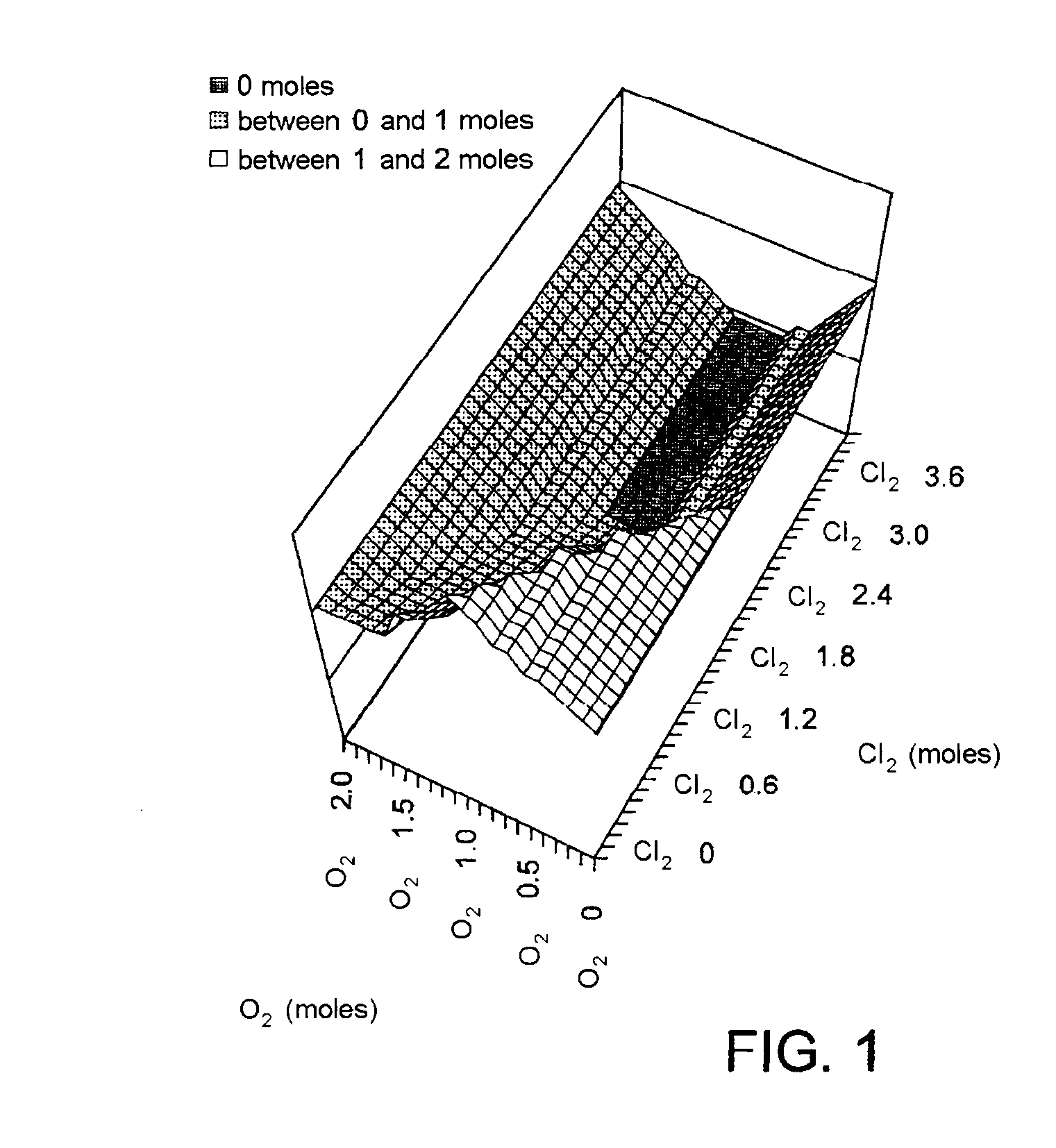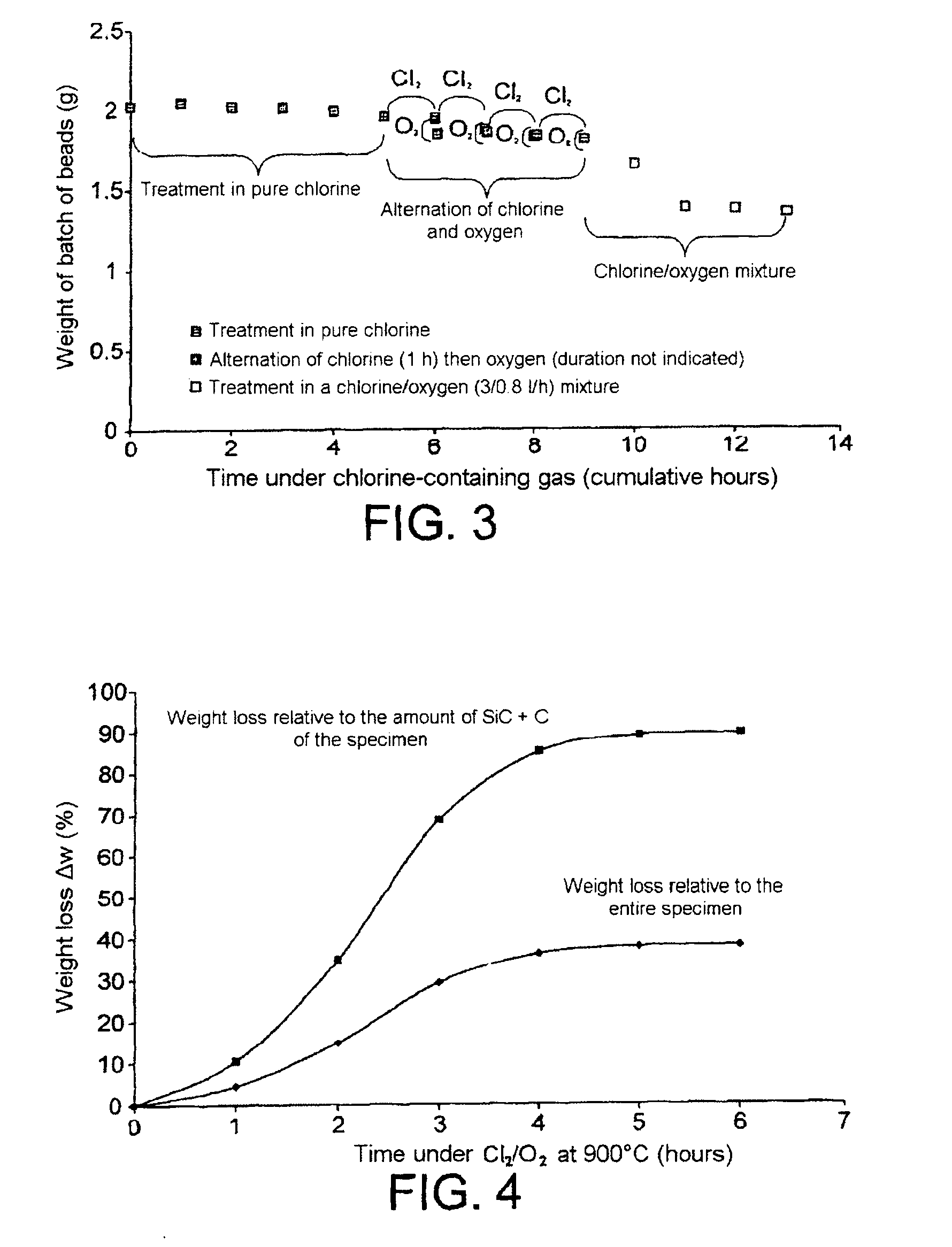Method for processing nuclear fuels containing silicon carbide and for decladding nuclear fuel particles
a technology of silicon carbide and nuclear fuel, which is applied in the direction of luminescent compositions, nuclear energy generation, climate sustainability, etc., can solve the problems of difficult management of nuclear contaminated fines, inability to achieve quantitative recovery, and inability to achieve processing methods suitable for irradiated triso fuels
- Summary
- Abstract
- Description
- Claims
- Application Information
AI Technical Summary
Benefits of technology
Problems solved by technology
Method used
Image
Examples
example 1
Thermodynamic Approach of the Action of Chlorine / Oxygen Mixtures on SiC
[0042]Thermodynamic calculations performed using the HSC (Outokumpu) software on the composition in equilibrium of a closed reactor system demonstrate that it is possible to volatilize the SiC in a single step using a chlorine / oxygen mixture rich in chlorine.
[0043]The appended FIG. 1 depicts the compositional region of the gas mixture for which theoretically there is no solid residue (the darkest region).
example 2
Combustion of Carbon
[0044]Carbon combustion is effective from 400° C. upwards. This was confirmed experimentally by thermogravimetric analysis. In this experiment, pure oxygen was used.
[0045]SiC volatilization was confirmed on powder, on particles and on bulk specimens.
example 3
Behavior of Powdered SiC in a Chlorine / Oxygen Mixture
[0046]A study for various temperatures shows that a temperature of 900° C. enabled SiC to be attacked quantitatively.
[0047]The results of this study are given in FIG. 2 below.
[0048]To obtain the results shown in FIG. 2a, a mixture consisting of 80% Cl2 by volume and 20% oxygen by volume was used.
[0049]To obtain the results shown in FIG. 2b, a mixture consisting of 80% Cl2 by volume and 20% oxygen by volume was used. The reaction was carried out at 900° C.
PUM
 Login to View More
Login to View More Abstract
Description
Claims
Application Information
 Login to View More
Login to View More - R&D
- Intellectual Property
- Life Sciences
- Materials
- Tech Scout
- Unparalleled Data Quality
- Higher Quality Content
- 60% Fewer Hallucinations
Browse by: Latest US Patents, China's latest patents, Technical Efficacy Thesaurus, Application Domain, Technology Topic, Popular Technical Reports.
© 2025 PatSnap. All rights reserved.Legal|Privacy policy|Modern Slavery Act Transparency Statement|Sitemap|About US| Contact US: help@patsnap.com



